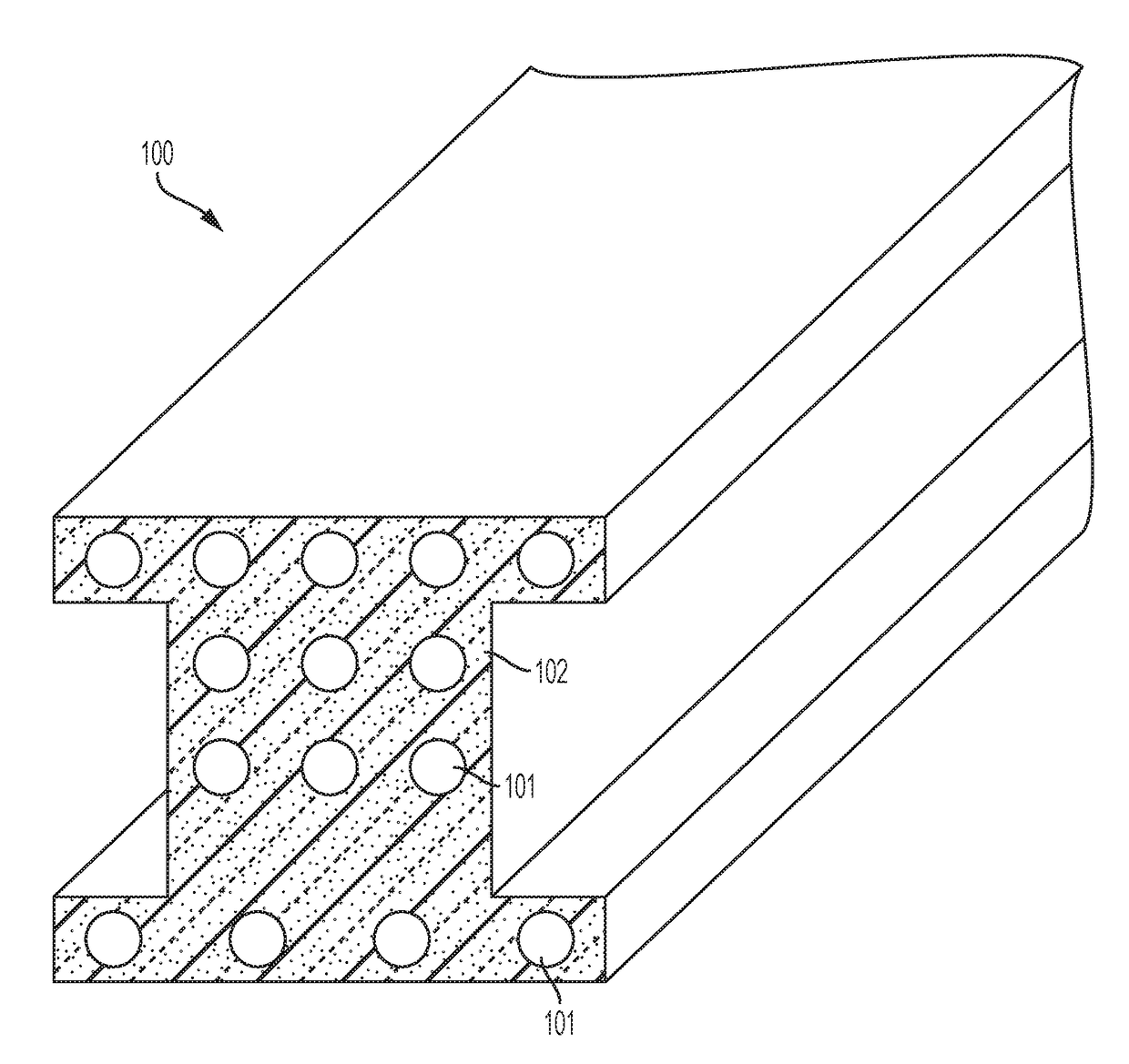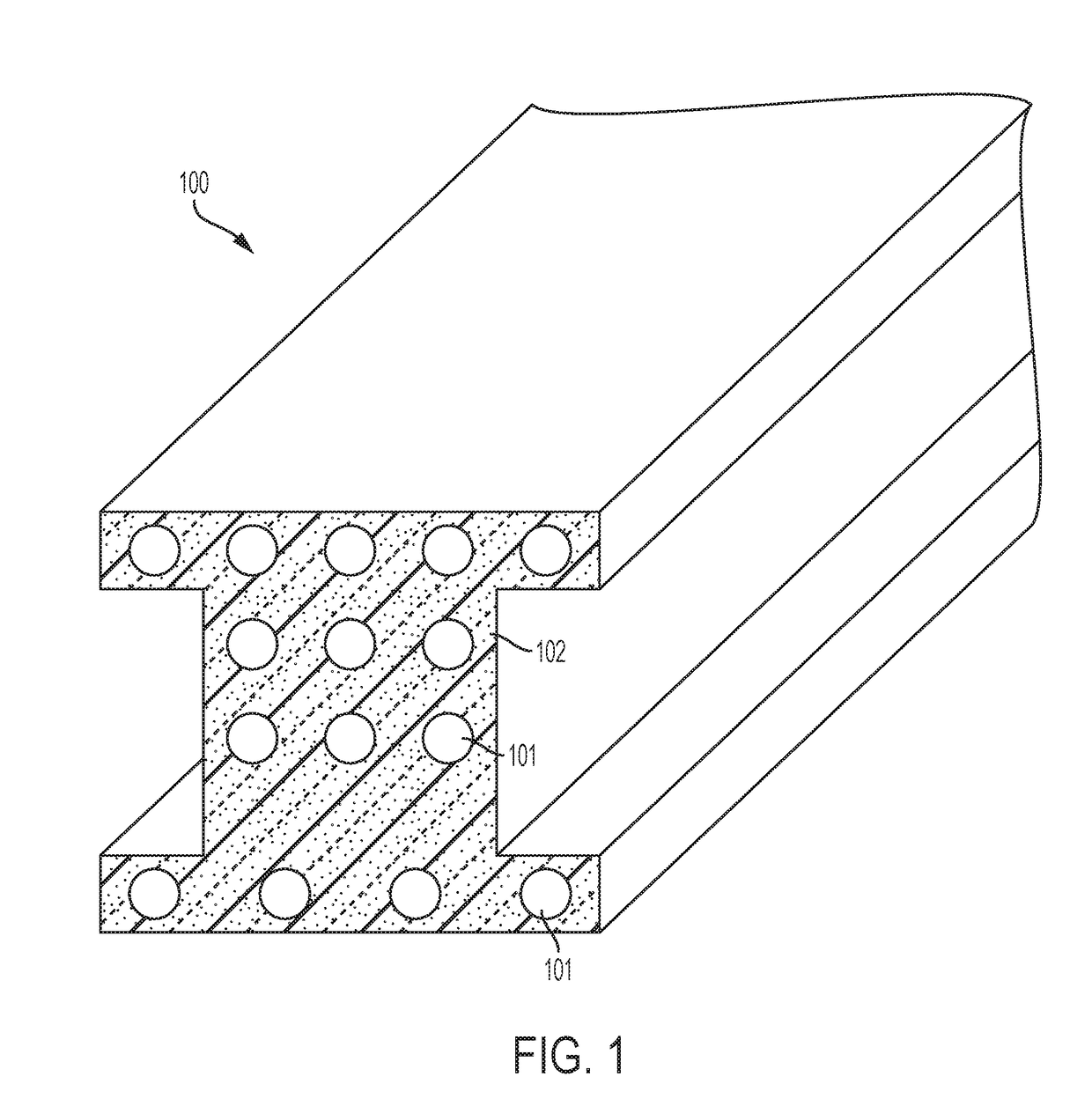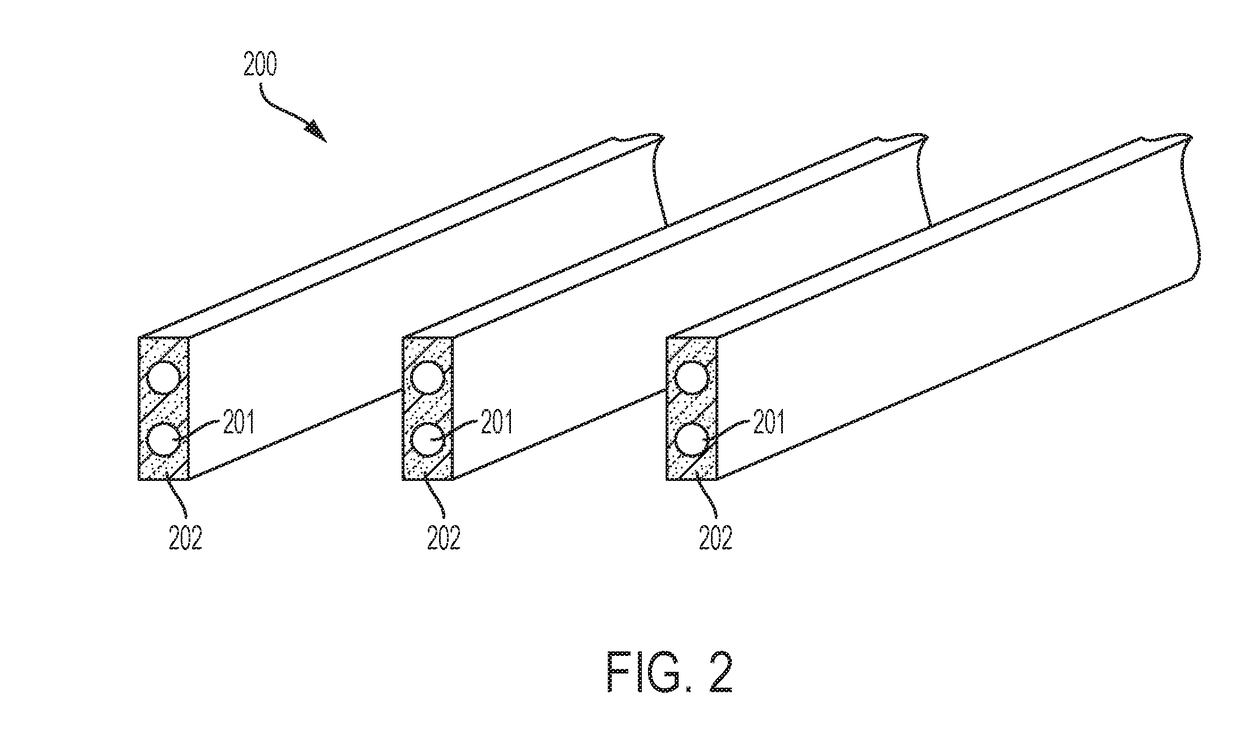Compositions, systems, and neural networks for bidirectional energy transfer, and thermally enhanced solar absorbers
a neural network and bidirectional energy technology, applied in the field of neural network systems for bidirectional energy transfer, can solve the problems of reducing the efficiency of solar energy storage,
- Summary
- Abstract
- Description
- Claims
- Application Information
AI Technical Summary
Benefits of technology
Problems solved by technology
Method used
Image
Examples
example 1
ms
[0155]In much of the world, expansive soils have led to the ruin of vertical and horizontal structures. In regions of North America, commercial, institutional, and residential buildings require a significant amount of geotechnical, civil, and structural engineering to combat the forces of expanding soils on a building site. The solution often chosen to prevent poured floors from cracking or buckling is to place grade beams of a certain size and strength in the ground.
[0156]The thermally conductive concrete composition may be used in a grade beam application. The design mix can be held at the optimal temperature to ensure the exothermic reaction of the concrete occurs at the proper temperature but does not exceed that temperature, because exceeding that temperature can cause undesirable effects on the strength of the grade beam. The system may be configured to ensure the proper cure temperature while significantly reducing the overall cure time. After the grade beam has gained its ...
example 2
hilled Beams
[0159]Chilled beams are dependent on air movement to transfer heat. Chilled beams are solely convective units. Active chilled beams combine room air and ventilation air to meet capacity. Passive chilled beams condition the air in the space only. Chilled beams can be used for heating and / or cooling the space, and provide high thermal comfort and energy efficiency.
[0160]A chilled beam made with the thermally conductive concrete composition removes heat more quickly than beams made from conventional concrete. Chilled beams may be at least 50% more effective at removing heat from a conditioned space. The chilled beam uses lower delta-T and that means they are effective at a greater temperature of entering heat-transfer fluid (e.g., water). This means it takes less energy to reject BTUs using this chilled beam, compared to a standard beam. Energy efficiency is improved, as is response time (faster).
[0161]FIG. 2 shows an exemplary embodiment of ceiling chilled beams 200. Three...
example 3
Replacement
[0162]There are many systems that utilize concrete. The thermally conductive concrete composition may be used in place of some or all of conventional concrete in any of these systems. Specific examples include heated driveways, temporary roads, bridges, garden terraces over parking structures, vertical walls, and ceilings.
[0163]Various benefits that can result may include one or more of the following:[0164]1. The system reduces or eliminates the large amount of washed gravel normally associated with soil stability.[0165]2. This system reduces or eliminates a large amount of concrete.[0166]3. This system reduces or eliminates the large amount of steel reinforcement (rebar and mesh) normally associated with this type of work.[0167]4. This system, when used as an underlayment for traditional concrete roads, flooring or bridges, reduces or eliminates the transmission of cracks into the topping surfaces from subsurface stresses.[0168]5. The reduction of tons of material having...
PUM
| Property | Measurement | Unit |
|---|---|---|
| size | aaaaa | aaaaa |
| particle size | aaaaa | aaaaa |
| thermal conductivity | aaaaa | aaaaa |
Abstract
Description
Claims
Application Information
 Login to View More
Login to View More - Generate Ideas
- Intellectual Property
- Life Sciences
- Materials
- Tech Scout
- Unparalleled Data Quality
- Higher Quality Content
- 60% Fewer Hallucinations
Browse by: Latest US Patents, China's latest patents, Technical Efficacy Thesaurus, Application Domain, Technology Topic, Popular Technical Reports.
© 2025 PatSnap. All rights reserved.Legal|Privacy policy|Modern Slavery Act Transparency Statement|Sitemap|About US| Contact US: help@patsnap.com



